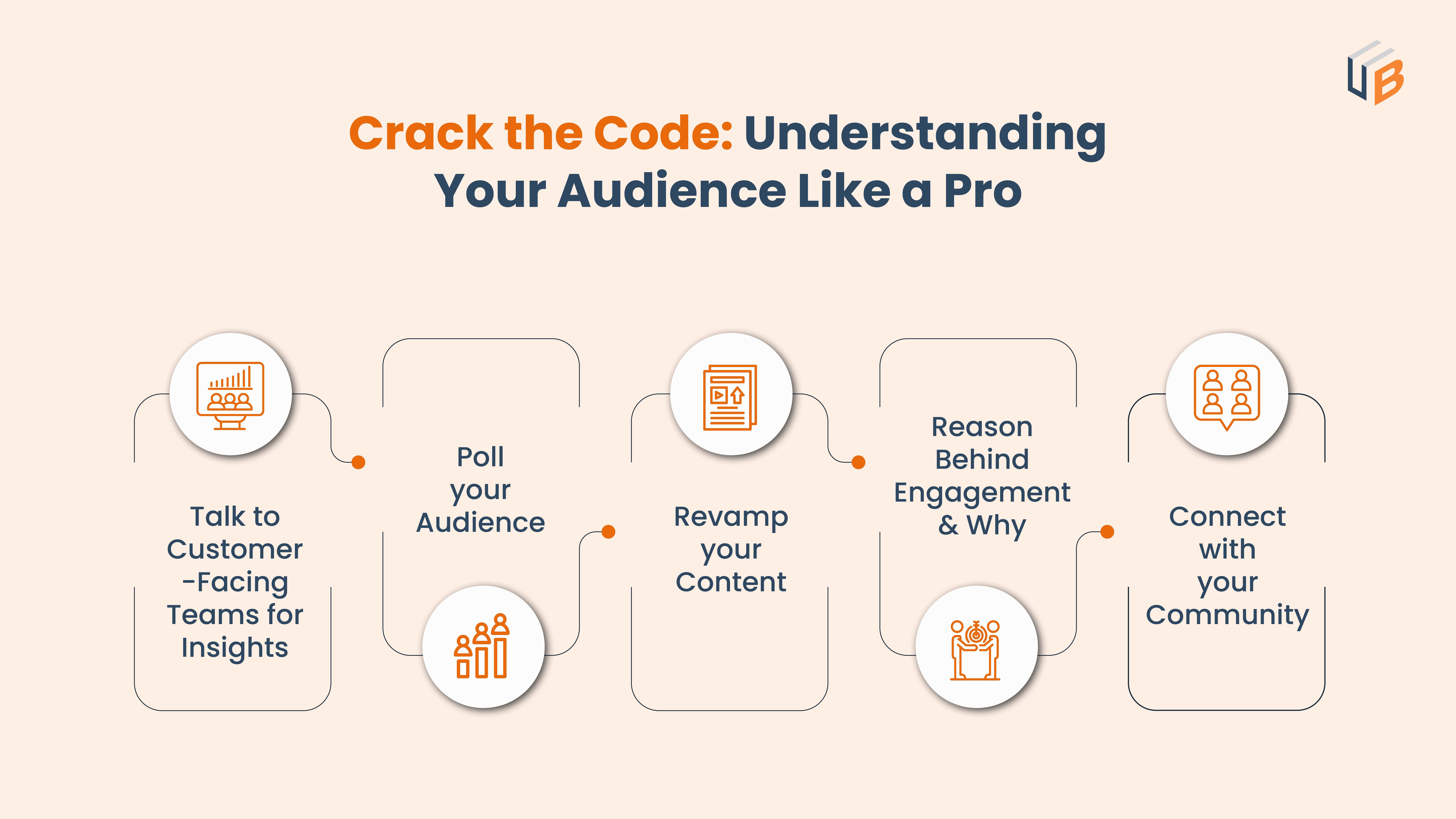
Demand generation, without a doubt is no longer a straightforward marketing approach, it is a combination of various kinds of strategies, tools, and insights that are aimed at building awareness, engaging potential customers, and more conversions.
In the upcoming months of 2025, marketers are going to face an entirely different landscape of demand generation, shaped by technological advancements, increased competition, and changing consumer behaviors.
A report by Demand Generation Benchmark Survey [Demand Gen Report] said, for any marketer, improving conversion rates, focusing on lead quality, and enhancing analytics capabilities are the top priorities. Yet, even with the best intentions, marketers often fall into costly traps that derail their efforts.
In order to avoid these demand generation pitfalls, you will require careful planning, proper execution, and constant optimization.
The 2025 Demand Generation Landscape
Demand generation constantly evolves due to technological advancements, changing consumer behavior, and shifting priorities in marketing. According to the 2024 Demand Generation Benchmark Survey by Demand Gen Report, marketers are focusing on the following areas:
- Conversion Rates & Campaign Performance: These days it is mostly seen, marketers are more pain pointing on tactics to drive higher conversion rates as it ensures every campaign is optimized to deliver measurable results.
- Lead Quality Over Quantity: The days of chasing massive lists of unqualified leads are over. Today, businesses emphasize generating fewer but high-quality leads who are more likely to convert into paying customers.
- Improved Analytics & Measurement: It is seen that modern marketers are investing in tools and techniques to measure campaign effectiveness, ROI, and the overall marketing impact on revenue in a better way.
- Targeting Key Stakeholders in Accounts: It is extremely important for B2B marketers to have ability to identify and engage with decision-makers and influencers within their target accounts, this will make sure of creation of better personalized messaging that resonates with the right audience.
These priorities show how demand generation has become more sophisticated. However, with sophistication comes complexity, and that’s where pitfalls occur.
7 Common Demand Generation Pitfalls and How to Overcome Them
Demand generation revolves around multiple marketing channels, customer segmentation, and data collection methods. Therefore, there are several points where demand generation marketers can make mistakes. So, to make demand generation pitfalls less daunting, watch out for these pitfalls today:
1. Disorganized Marketing Data
Why It’s a Problem:
In modern marketing, data is your foundation. Data drives the campaigns. Hence, in order to ensure that there are no falters in the campaign, data has to be clean, organized and actionable. According to Gartner, poor-quality data costs businesses an average of $12.9 million annually (Gartner).
What Goes Wrong:
- Most of the times businesses go overwhelm on data and collect huge amounts of it from various sources (e.g., website visits, social media, email campaigns) but seems to fail in organizing and standardizing them.
- Duplicate, outdated, or incomplete records make it difficult to draw actionable insights.
The simple solution to dodge this demand generation pitfall is to manage your customer data effectively.
Here’s how you can do it:
- Appoint a chief data officer in your organization to monitor the quality of data.
- Use automatic solutions like CRM to streamline your customer data.
- Constantly monitor your data quality.
2. Lack of Audience Understanding
Why It’s a Problem:
Failure to understand your target audience produces marketing strategies that miss the mark and lead to uninteresting content and reduced audience interaction. The failure to establish meaningful connections between businesses and their target audience amounts to marketing failure.
What Goes Wrong:
- Many businesses mistakenly think they know their target audience without conducting proper groundwork.
- Marketers who fail to segment their audience launch promotional efforts that miss their target. These ineffective strategies produce zero engagement results.

How to Avoid It:
- Conduct Behavioral Analysis: Utilize tools including Google Analytics and HubSpot to analyze user behavior by tracking website interaction patterns and identifying drop-off points as well as pages users visit.
- Segment Your Audience: Break your audience into distinct segments through parameters that include demographic data, user interests, and audience behaviors.
For instance:
- Potential buyers often visit your pricing pages before finalizing their purchase decision.
- Users who interact with your blog content might require educational resources to continue their journey.
- Leverage Customer Surveys: Tools such as Typeform and SurveyMonkey help businesses obtain direct audience feedback through customer surveys.
3. Neglecting Lead Scoring
Why It’s a Problem:
Not all leads are created equal. Treating every lead the same wastes time and resources while potentially missing opportunities with those closer to conversion.
What Goes Wrong:
- Without lead scoring, sales teams end up chasing unqualified leads or ignoring high-priority ones.
- Marketing efforts become less targeted, reducing ROI.
How to Avoid It:
- Develop a Lead Scoring Framework: Assign points based on actions like visiting key pages, downloading resources, or engaging with emails.
- Automate Scoring: Use platforms like Marketo, Pardot, or HubSpot to calculate scores in real time.
- Integrate with CRM: Ensure your lead scores are shared with the sales team for better alignment and prioritization.
Example Scoring Criteria:
- Visiting the pricing page: +10 points
- Opening multiple marketing emails: +5 points
- Filling out a demo request form: +20 points
4. Overlooking Content Marketing
Why It’s a Problem:
B2B commercial transactions experience heavy digital interjection across the market in 2024. Research data shows prospects complete 70% of their buying process before they contact sales personnel.
The essential role of content reveals its crucial value in both attracting attention and leading prospects through the sales pipeline. Online research dominates the buying process as potential customers increasingly rely on vendor sites and social media for decision-making information. Companies need strong content strategies to connect with potential buyers as they move through their decision-making process.
What Goes Wrong:
- Publishing generic content that doesn’t address specific pain points.
- Lack of a cohesive content strategy leads to inconsistent messaging.
How to Avoid It:
- Focus on High-Value Content: Create eBooks, whitepapers, and case studies that address common challenges in your industry.
- Utilize SEO Best Practices: Research keywords and optimize content to rank higher on search engines.
- Incorporate Storytelling: Craft narratives that resonate emotionally with your audience.
- Repurpose Content: Turn blog posts into infographics, webinars, or podcasts to maximize reach.
5. Ignoring Free Incentives
Why It’s a Problem:
Customers respond powerfully to free trial experiences and demonstration opportunities along with educational resources, which help businesses attract prospects and start meaningful interactions. Your prospects gain access to firsthand encounters with your product or service through these tools, which eliminate their doubts and fears.
Your prospects need these offers to feel certain about moving forward through their buyer journey so they can become paying customers. Competitors easily capture audience attention with free options and subsequently win market share.
What Goes Wrong:
- Prospects are unwilling to commit without experiencing the value of your product or service.
- Competitors offering free options often steal market share.
How to Avoid It:
- Offer Freemium Models: Allow users to access basic features for free while providing paid upgrades.
- Host Free Webinars or Workshops: Educate prospects while showcasing your expertise.
- Create Downloadable Resources: Offer templates, calculators, or guides tailored to your audience’s needs.
These approaches enable you to build trust while showing the value of your product, which moves potential customers toward making a purchase. Offering free trials, demos, and resources creates a two-fold benefit by decreasing hesitation and building brand distinction versus competitors, which leads to improved customer engagement and conversion statistics.
6. Failing to Measure Strategic Metrics
Why It’s a Problem:
Without the right metrics, it’s impossible to know whether your campaigns are working. Metrics provide the foundation for optimization and justification of your marketing spend.
Key Metrics to Track:
- Cost per Lead (CPL): Tracks the cost of acquiring each lead.
- Customer Lifetime Value (CLV): Measures the total revenue a customer generates over their lifetime.
- Lead-to-Customer Conversion Rate: Evaluates the effectiveness of your funnel.
- Engagement Time: Indicates how engaged prospects are with your content.
How to Avoid It:
- Use marketing analytics platforms like Google Data Studio or Tableau for centralized reporting.
- Align metrics with specific goals (e.g., ROI for paid ads, engagement for content marketing).
7. Spreading Resources Too Thin
Why It’s a Problem:
When businesses try to manage too many marketing channels simultaneously, they encounter a blend of scattered campaigns and performance inefficiencies along with weakened focus. Your team struggles to maintain high-quality work across multiple platforms because it distributes its resources across too many marketing channels. Your ability to create significant outcomes becomes blocked and your time and resources waste away as a result.
How to Avoid It:
- Examine your past campaign performance data to select channels that demonstrate consistently optimal results.
- Use A/B testing techniques to evaluate various media channels and content approaches that maximize engagement and returns on investment.
- Guide your marketing efforts toward channels that deliver your business the greatest number of leads or conversions. When social media delivers the most leads and traffic consistently, place your resources in this channel rather than scattering them across less effective platforms.
- Focused marketing efforts combined with optimal resource management will maximize your marketing campaign’s effectiveness.
Final Thoughts: Mastering Demand Generation in 2025
The growth of a business depends heavily on demand generation, yet strategic planning and execution remain essential for attaining success. Avoiding these seven problems will help you optimize your efforts while improving audience engagement to get better returns.
Ready to supercharge your demand generation strategy? Take advantage of our customized solutions now to achieve the highest possible return on your marketing investment.
Avoid common demand generation pitfalls and optimize your strategy for maximum impact. Engage your audience effectively and achieve higher marketing ROI.

Our blog
Latest blog posts
Tool and strategies modern teams need to help their companies grow.

Running a business comes with its own set of challenges, especially when it comes to ...

AI is surely a futuristic concept but it evolves today, particularly in sales and mar...

A successful webinar requires more than just a great speaker and a compelling topic. ...







